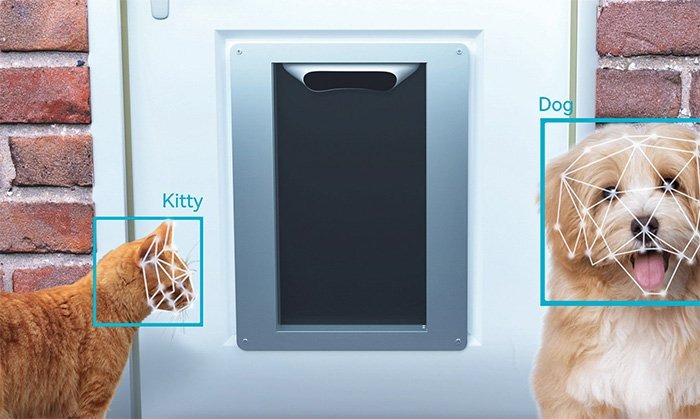
Cat Grooming 101: Brushing, Bathing, and Nail Care for a Sleek Feline
Proper cat grooming involves regular brushing, occasional bathing, and nail care to keep your feline sleek and healthy. While cats groom themselves, a helping hand from you reduces shedding, prevents mats, and ensures hygiene. Using the right tools and techniques not only maintains their comfort but also deepens your bond. For persistent grooming issues, seeking professional help ensures your pet gets the care they need in a safe manner.
🐶 Pet Star
46 min read · 26, Jun 2025

Introduction
Cats are naturally clean creatures—they spend a good portion of their day grooming themselves. However, that doesn’t mean your feline friend doesn’t need a little help. Regular grooming not only keeps your cat looking sleek and beautiful, but also supports their overall health and emotional well-being.
Whether you have a short-haired tabby or a long-haired Persian, brushing, bathing, and nail trimming are essential components of cat care. These grooming practices help prevent fur matting, reduce hairballs, protect furniture from sharp claws, and give you the chance to check your cat’s skin and coat for early signs of health issues.
In this article, we’ll walk you through the basics of cat grooming—brushing, bathing, and nail care—along with tools, techniques, and practical tips to keep your kitty happy, healthy, and shiny. Cat grooming, far from being a purely aesthetic endeavor, is a fundamental aspect of a feline's health, hygiene, and overall well-being, particularly for indoor cats and breeds with long or dense coats. While cats are renowned for their meticulous self-grooming habits, their tongue and paws alone cannot always prevent mats, remove excess shedding hair, or keep nails at a healthy length, especially as they age or if they have specific health conditions. Therefore, human intervention through regular brushing, occasional bathing, and routine nail care is not just beneficial but often essential to prevent painful mats, reduce hairballs, maintain skin health, and ensure their comfort. Mastering the basics of cat grooming strengthens the bond between cat and owner, allows for early detection of skin issues or parasites, and ultimately contributes to a sleeker, healthier, and happier feline companion. This guide will delve into the nuances of each grooming component, emphasizing the importance of positive reinforcement, patience, and consistency to make the experience stress-free for both cat and owner, transforming what could be a chore into a calm, regular ritual.
Brushing is the cornerstone of feline grooming and should be a regular, if not daily, practice, especially for long-haired breeds like Persians or Maine Coons, but also beneficial for short-haired cats to manage shedding and prevent hairballs. The primary goal of brushing is to remove loose and dead fur, distribute natural skin oils, prevent mats and tangles, and stimulate blood circulation to the skin. For long-haired cats, daily brushing is ideal to prevent the formation of mats, which can be incredibly painful, pull on the skin, and lead to skin infections if left untended. Mats typically form in areas of friction, such as behind the ears, armpits, flanks, and under the tail. For short-haired cats, brushing a few times a week is generally sufficient to reduce shedding and minimize hairballs. The choice of brush is critical and often depends on the cat's coat type. A slicker brush, with its fine, wire bristles, is excellent for removing loose undercoat and detangling for both long and short-haired cats. A rubber curry brush or grooming mitt is ideal for short-haired cats, effectively removing loose hair and providing a gentle massage. A fine-toothed comb or metal comb is indispensable for long-haired cats to detect and gently work out small tangles and ensure brushing has reached the skin. A de-shedding tool, like a FURminator-style brush, can be highly effective for removing significant amounts of undercoat, but should be used sparingly and carefully to avoid irritating the skin. The technique involves gentle, even strokes, working in sections. For long-haired cats, it's often best to brush in layers, starting at the bottom and working upwards, ensuring the brush reaches down to the skin. Always brush in the direction of hair growth. If a mat is encountered, avoid pulling; instead, try to gently tease it apart with your fingers or the wide teeth of a comb. For stubborn mats, a mat splitter or blunt-nosed scissors might be necessary, but extreme caution is advised to avoid cutting the skin, which is very thin and delicate. If mats are severe or close to the skin, professional grooming is recommended. Make brushing a positive experience by starting early in kittenhood, using gentle motions, rewarding with treats and praise, and keeping sessions short. If a cat resists, stop and try again later, gradually increasing duration.
Bathing cats is often perceived as a monumental task, and for many cats, it can be. However, occasional bathing can be beneficial, particularly for outdoor cats, cats with skin conditions, those who have gotten into something messy, or elderly/overweight cats who struggle with self-grooming. Unlike dogs, most cats do not require frequent baths. For most short-haired indoor cats, a bath may only be necessary a few times a year, if at all. Long-haired cats might benefit from a bath every few months to help manage their coats and reduce matting. When bathing, use a cat-specific shampoo that is pH-balanced for their skin; human shampoos or dog shampoos can irritate a cat's skin and strip essential oils. Preparation is key: trim nails beforehand, have towels ready, use a non-slip mat in the tub, and ensure the water is lukewarm, not hot. Fill the tub with only a few inches of water, or use a sink. Gently wet your cat, starting from the neck down, avoiding the face and ears. Apply shampoo and lather gently, working it into the coat, again avoiding eyes and ears. Rinse thoroughly until all traces of shampoo are gone, as residue can cause skin irritation or dandruff. Drying is as important as washing. First, towel dry as much as possible, gently squeezing water from the fur. Then, use a pet-specific blow dryer on the lowest, coolest setting, keeping it at a distance to avoid frightening or overheating your cat. Many cats will air-dry or finish drying themselves, but ensuring they are completely dry, especially long-haired breeds, is crucial to prevent chilling or skin issues. Again, positive reinforcement with treats and praise throughout the process can help reduce anxiety. For cats who absolutely despise water, waterless shampoos or grooming wipes can be a good alternative for spot cleaning and freshening the coat in between full baths.
Nail care is an essential and often overlooked aspect of feline grooming that directly impacts a cat's comfort, health, and your furniture. Untrimmed nails can become painfully long, curl into the paw pads causing injury and infection, get snagged on carpets or fabric (leading to painful tears), and interfere with a cat's natural walking gait. Regular nail trimming, ideally every 2-4 weeks, is crucial. Use sharp, cat-specific nail clippers (either scissor-style or guillotine-style). Familiarize yourself with the anatomy of a cat's nail: the transparent part is the nail itself, and the pinkish part within is the "quick," which contains blood vessels and nerves. Cutting into the quick is painful for the cat and will cause bleeding. Always aim to trim only the sharp, clear tip of the nail, just before the quick. If your cat has dark nails, it might be harder to see the quick; in such cases, trim tiny slivers at a time or consult a vet/groomer. To trim, gently press on the paw pad to extend the nail. Work quickly and calmly. If your cat resists, do a few nails at a time and take breaks. Again, positive reinforcement with treats and praise makes the experience more tolerable. If you accidentally cut the quick, apply styptic powder or cornstarch to stop the bleeding and avoid scolding your cat. Starting nail trims in kittenhood helps desensitize them to the process, making it much easier as adults. If you are uncomfortable or unsure, your veterinarian or a professional groomer can demonstrate the correct technique.
Beyond these three core elements, comprehensive feline grooming also involves ear cleaning and dental care. Regularly check your cat's ears for dirt, wax buildup, redness, or unusual odor, which could indicate an infection. If the ears appear dirty, use a veterinarian-approved ear cleaner and a soft cotton ball or gauze to gently wipe the outer ear canal, never inserting anything deep into the ear. For signs of infection, consult a vet. While professional dental cleanings are often necessary, regular tooth brushing at home with cat-specific toothpaste and a soft brush can significantly reduce plaque and tartar buildup, preventing painful dental disease that impacts overall health. Introduce tooth brushing gradually and positively.
In conclusion, effective cat grooming is an integrated approach encompassing regular brushing, occasional bathing, and routine nail care, all performed with patience, gentleness, and positive reinforcement. Consistent brushing prevents painful mats, reduces shedding, and minimizes hairballs, choosing the right brush for the coat type and using proper technique. Bathing, while less frequent, helps clean soiled coats and manage skin conditions, always with cat-specific shampoos and thorough drying. Regular nail trimming prevents discomfort, injury, and damage to furniture, requiring careful attention to avoid the quick. Beyond these essentials, routine ear checks and consistent dental hygiene further contribute to a cat's overall well-being. By embracing these grooming practices, owners not only maintain their feline companion's sleek appearance and physical health but also strengthen their bond, ensuring a comfortable, contented, and long-lasting partnership.
Understanding the Importance of Cat Grooming
Grooming isn’t just about vanity—it plays a crucial role in your cat’s physical and emotional health. A well-groomed cat:
- Has fewer hairballs and mats
- Shows fewer signs of skin infections or parasites
- Has reduced shedding
- Develops a stronger bond with the owner through gentle touch
- Feels more relaxed and clean
Neglecting grooming can lead to discomfort, oily or dirty fur, ingrown nails, or even behavioral issues like excessive scratching and licking.
Brushing: The Foundation of Cat Grooming
Brushing your cat is the most important and most frequent grooming task. It helps remove loose fur, distributes skin oils, prevents mats, and gives you a chance to inspect for ticks, fleas, or skin problems.
1. Benefits of Brushing
- Reduces shedding and hairballs
- Prevents tangles and mats
- Stimulates circulation and skin health
- Builds trust between you and your cat
2. How Often to Brush
- Short-haired cats: 1–2 times per week
- Long-haired cats: Daily brushing recommended
3. Tools to Use
- Slicker brush: Great for detangling and removing debris
- Bristle brush: Helps spread natural oils
- Deshedding comb: Useful during seasonal shedding
- Mat splitter or detangler: For long-haired cats with knots
4. Brushing Technique
- Always brush in the direction of hair growth
- Be gentle, especially around the belly and tail
- Check for lumps, bumps, or fleas while brushing
- Reward your cat with treats after each session
Bathing: When and How to Do It Right
Cats generally don’t need frequent baths. However, sometimes they get into messes, suffer from skin issues, or are too old or overweight to groom themselves effectively.
1. When to Bathe a Cat
- After contact with toxic substances
- If they have a skin infection or heavy dandruff
- Long-haired breeds prone to mats
- Elderly, ill, or overweight cats who can’t self-groom
2. Preparing for the Bath
- Trim your cat’s nails beforehand
- Brush out tangles and mats
- Use lukewarm water and a gentle, cat-specific shampoo
- Lay a non-slip mat in the sink or tub
3. Bathing Process
- Wet your cat slowly using a cup or sprayer
- Lather with shampoo, avoiding eyes, ears, and nose
- Rinse thoroughly with clean water
- Wrap in a towel and gently pat dry
- Keep your cat warm until fully dry
4. Tips for a Stress-Free Bath
- Keep the session short and calm
- Use soft, soothing voice tones
- If your cat is extremely fearful, consider waterless shampoos or professional grooming
Nail Care: Keeping Claws in Check
Cats naturally file their claws through scratching. However, indoor cats often need nail trims to prevent overgrowth, snags, and accidental scratches.
1. Why Nail Trimming is Important
- Prevents painful overgrown or ingrown nails
- Reduces damage to furniture and skin
- Protects elderly cats who can’t groom claws properly
2. When and How Often to Trim
- Every 2–4 weeks
- Check nails monthly for curling or cracking
3. Tools You’ll Need
- Cat nail clippers or scissor-style trimmers
- Styptic powder (to stop bleeding in case of accidental cut)
- Treats for positive reinforcement
4. Nail Trimming Steps
- Gently hold your cat’s paw and press to extend the claw
- Clip just the sharp, clear tip, avoiding the pink quick
- Take breaks if your cat gets anxious
- Praise and reward afterward
Grooming Long-Haired vs. Short-Haired Cats
Long-Haired Cats
- Require daily brushing to prevent matting
- May need occasional sanitary trims around the rear
- Often benefit from monthly baths
- Pay special attention to armpits and neck area for tangles
Short-Haired Cats
- Easier to manage with weekly brushing
- Usually self-clean well
- Bathe only when necessary
- Use a rubber brush or grooming glove for daily quick touch-ups
Skin, Coat, and Health Checks During Grooming
Each grooming session is a chance to observe your cat’s physical condition. Look out for:
- Bumps, scabs, or rashes
- Excessive dandruff or hair loss
- Fleas or ticks (especially under the legs and tail)
- Unusual smells from ears, mouth, or skin
- Matted fur or oil buildup
Early detection means early treatment and a healthier kitty.
Creating a Positive Grooming Routine
Cats respond best to consistency and gentle routines. Here’s how to build a grooming habit your cat will love:
1. Start Young
Introduce grooming from kittenhood to normalize the experience.
2. Be Calm and Patient
Talk softly and move slowly. Avoid forcing the grooming.
3. Use Treats and Praise
Reward after brushing or nail clipping sessions.
4. Pick the Right Time
Choose a calm moment when your cat is relaxed or sleepy.
5. Keep Sessions Short at First
Even 2–5 minutes is good. Gradually increase over time.
DIY Natural Grooming Products (Optional)
If you're into DIY or want to go chemical-free:
1. Cat Fur Spray
Mix 1 cup water + 1 tsp coconut oil + a few drops of lavender (optional, ensure pet-safe)
Use lightly to moisturize dry fur.
2. Natural Flea Repellent Rinse
Boil rosemary leaves in water, cool, and use as a rinse post-bath.
3. Homemade Paw Balm
Coconut oil + beeswax + shea butter for cracked or dry paws.
Common Grooming Problems and Fixes
1. Cat Hates Brushing
Fix: Use a soft glove brush, keep sessions short, reward often.
2. Won’t Let You Trim Nails
Fix: Trim one or two nails at a time, get a second person to help, or visit a groomer.
3. Gets Aggressive During Baths
Fix: Try dry shampoo, use a calming diffuser, or consult a professional groomer.
4. Fur Still Looks Greasy After Bath
Fix: Use less shampoo, rinse thoroughly, and ensure water is warm—not hot.
Myths About Cat Grooming: Busted!
“Cats groom themselves. Humans don’t need to help.”
→ False. While cats self-groom, they can’t manage mats, nails, or deep cleaning.
“Bathing a cat is cruel.”
→ Not if done properly. Some cats tolerate it well, especially with early training.
“Only long-haired cats need brushing.”
→ Even short-haired cats benefit from weekly brushing to reduce shedding and hairballs.
“You’ll hurt the cat if you trim their nails.”
→ Only if you cut into the quick. Proper tools and care make trimming safe and painless.
Conclusion
Grooming your cat is more than just a beauty routine—it’s a health essential and a bonding experience. From removing excess hair to checking for skin problems, brushing, bathing, and nail care all play a role in keeping your feline companion sleek, healthy, and content.
Whether you have a fluffy Maine Coon or a sleek Siamese, incorporating gentle grooming habits into your routine builds trust and ensures your pet lives a clean, comfortable, and joyful life.
A well-groomed cat is a happy cat. Start today—one brush stroke at a time.
Q&A Section
Q1: Why is regular grooming important for cats?
Ans: Regular grooming keeps your cat's coat healthy, reduces shedding, prevents matting, and strengthens your bond with your pet.
Q2: How often should you brush your cat?
Ans: Long-haired cats need brushing daily, while short-haired cats should be brushed 2–3 times a week to remove loose fur and prevent tangles.
Q3: What type of brush is best for grooming cats?
Ans: Use a slicker brush or metal comb for long-haired cats and a bristle brush or grooming glove for short-haired cats.
Q4: Can cats be bathed regularly?
Ans: Cats generally groom themselves, but occasional baths every few months can help, especially if your cat is dirty or has skin issues.
Q5: What type of shampoo should be used for bathing cats?
Ans: Always use a cat-specific, gentle shampoo—never human shampoo—as it maintains their skin pH and avoids irritation.
Q6: How do you prepare a cat for a bath?
Ans: Trim their nails, brush their coat, place a rubber mat in the tub, use lukewarm water, and speak gently to keep them calm.
Q7: Is nail trimming necessary for indoor cats?
Ans: Yes, regular nail trimming prevents overgrowth, reduces scratching damage, and keeps your cat comfortable while walking or playing.
Q8: How often should a cat’s nails be trimmed?
Ans: Trim your cat’s nails every 2–4 weeks depending on how quickly they grow and how active your cat is.
Q9: How do you safely trim a cat’s nails at home?
Ans: Use pet nail clippers, gently press the paw to expose the claw, and cut just the sharp tip—avoid the pink quick area to prevent bleeding.
Q10: What signs indicate your cat needs professional grooming?
Ans: Matted fur, strong odors, long nails, or resistance to grooming may indicate it’s time to visit a professional groomer or vet.
Similar Articles
Find more relatable content in similar Articles

How Pets Strengthen Family Bonds...
Pets are more than just compan.. Read More

How Climate Change Affects Wild and Domestic Animals...
Climate change is dramatically.. Read More

Smart Homes for Pets: Automated Feeders, Doors, and Mo..
As smart home technology advan.. Read More

Sustainable Pet Products: What to Look for in 2025...
As sustainability becomes a ce.. Read More
Explore Other Categories
© 2024 Copyrights by rPets. All Rights Reserved.